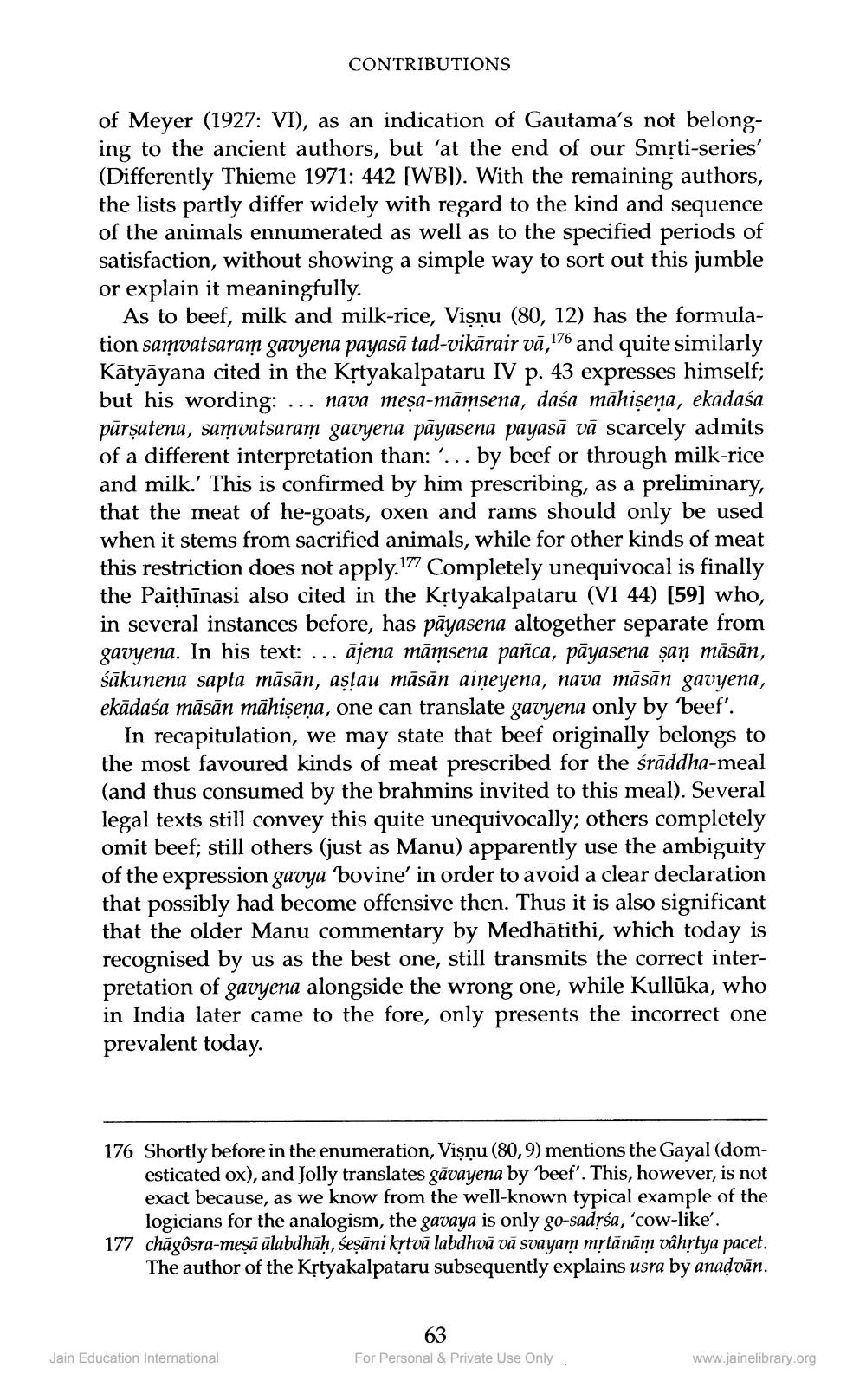________________
CONTRIBUTIONS
of Meyer (1927: VI), as an indication of Gautama's not belonging to the ancient authors, but 'at the end of our Smộti-series' (Differently Thieme 1971: 442 [WB]). With the remaining authors, the lists partly differ widely with regard to the kind and sequence of the animals ennumerated as well as to the specified periods of satisfaction, without showing a simple way to sort out this jumble or explain it meaningfully.
As to beef, milk and milk-rice, Vişnu (80, 12) has the formulation samvatsaram gavyena payasā tad-vikārair vā,176 and quite similarly Kātyāyana cited in the Krtyakalpataru IV p. 43 expresses himself; but his wording: ... nava meșa-māmsena, daśa māhisena, ekādaśa pārşatena, samvatsaram gavyena pāyasena payasā vā scarcely admits of a different interpretation than: '... by beef or through milk-rice and milk.' This is confirmed by him prescribing, as a preliminary, that the meat of he-goats, oxen and rams should only be used when it stems from sacrified animals, while for other kinds of meat this restriction does not apply.177 Completely unequivocal is finally the Paithīnasi also cited in the Krtyakalpataru (VI 44) [59] who, in several instances before, has pāyasena altogether separate from gavyena. In his text: ... ājena māmsena pañca, pāyasena șan māsān, śākunena sapta māsān, aştau māsān aiņeyena, nava māsān gavyena, ekādaśa māsān māhișena, one can translate gavyena only by 'beef'.
In recapitulation, we may state that beef originally belongs to the most favoured kinds of meat prescribed for the śrāddha-meal (and thus consumed by the brahmins invited to this meal). Several legal texts still convey this quite unequivocally; others completely omit beef; still others (just as Manu) apparently use the ambiguity of the expression gavya 'bovine' in order to avoid a clear declaration that possibly had become offensive then. Thus it is also significant that the older Manu commentary by Medhātithi, which today is recognised by us as the best one, still transmits the correct interpretation of gavyena alongside the wrong one, while Kullūka, who in India later came to the fore, only presents the incorrect one prevalent today.
176 Shortly before in the enumeration, Vişnu (80,9) mentions the Gayal (dom
esticated ox), and Jolly translates gāvayena by beef'. This, however, is not exact because, as we know from the well-known typical example of the
logicians for the analogism, the gavaya is only go-sadrśa, 'cow-like'. 177 chāgôsra-mesā alabdhaḥ, śeşāni kṛtvā labdhvā vā svayam mrtānām vâhịtya pacet.
The author of the Krtyakalpataru subsequently explains usra by anadvān.
63
Jain Education International
For Personal & Private Use Only
www.jainelibrary.org




